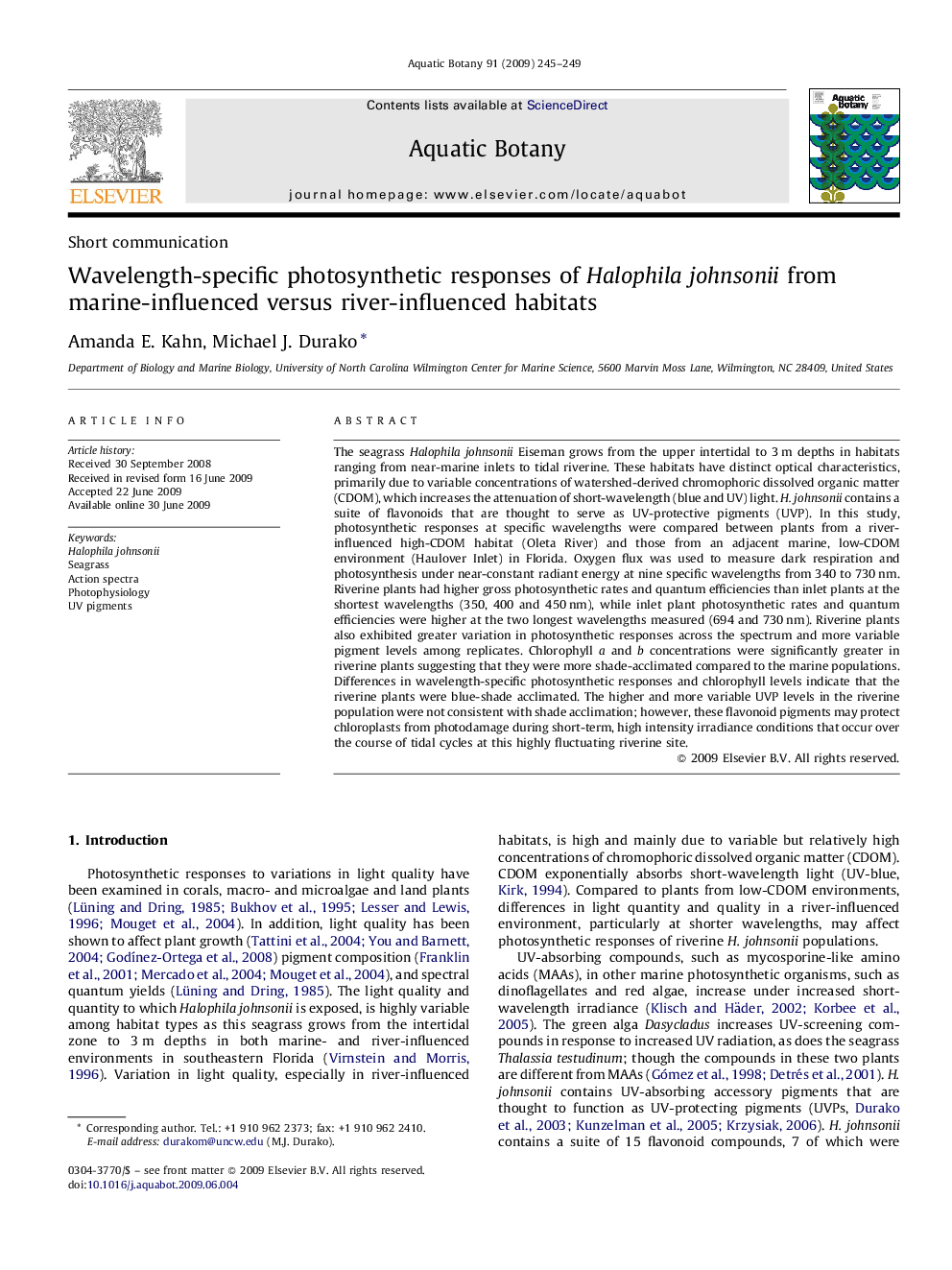| کد مقاله | کد نشریه | سال انتشار | مقاله انگلیسی | نسخه تمام متن |
|---|---|---|---|---|
| 4528275 | 1324296 | 2009 | 5 صفحه PDF | دانلود رایگان |

The seagrass Halophila johnsonii Eiseman grows from the upper intertidal to 3 m depths in habitats ranging from near-marine inlets to tidal riverine. These habitats have distinct optical characteristics, primarily due to variable concentrations of watershed-derived chromophoric dissolved organic matter (CDOM), which increases the attenuation of short-wavelength (blue and UV) light. H. johnsonii contains a suite of flavonoids that are thought to serve as UV-protective pigments (UVP). In this study, photosynthetic responses at specific wavelengths were compared between plants from a river-influenced high-CDOM habitat (Oleta River) and those from an adjacent marine, low-CDOM environment (Haulover Inlet) in Florida. Oxygen flux was used to measure dark respiration and photosynthesis under near-constant radiant energy at nine specific wavelengths from 340 to 730 nm. Riverine plants had higher gross photosynthetic rates and quantum efficiencies than inlet plants at the shortest wavelengths (350, 400 and 450 nm), while inlet plant photosynthetic rates and quantum efficiencies were higher at the two longest wavelengths measured (694 and 730 nm). Riverine plants also exhibited greater variation in photosynthetic responses across the spectrum and more variable pigment levels among replicates. Chlorophyll a and b concentrations were significantly greater in riverine plants suggesting that they were more shade-acclimated compared to the marine populations. Differences in wavelength-specific photosynthetic responses and chlorophyll levels indicate that the riverine plants were blue-shade acclimated. The higher and more variable UVP levels in the riverine population were not consistent with shade acclimation; however, these flavonoid pigments may protect chloroplasts from photodamage during short-term, high intensity irradiance conditions that occur over the course of tidal cycles at this highly fluctuating riverine site.
Journal: Aquatic Botany - Volume 91, Issue 3, October 2009, Pages 245–249